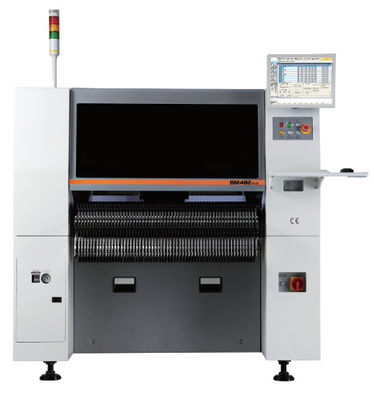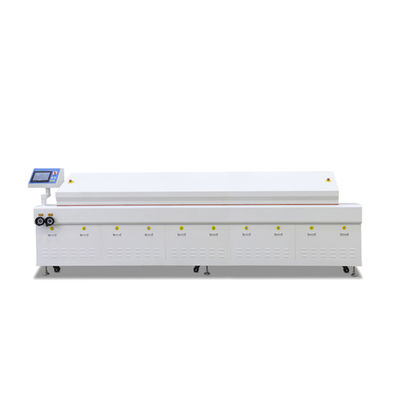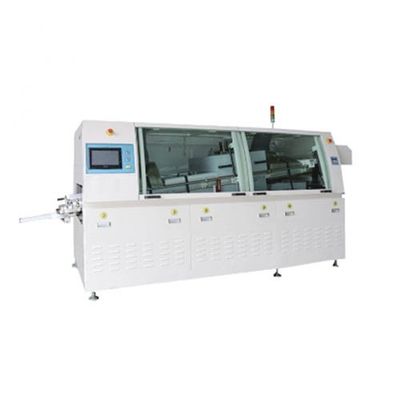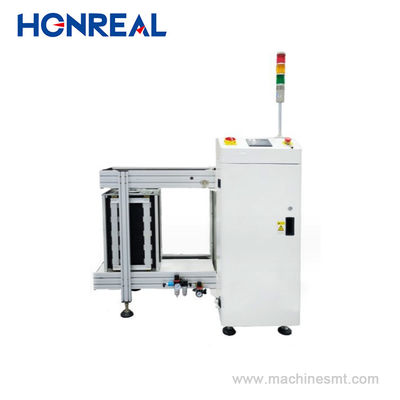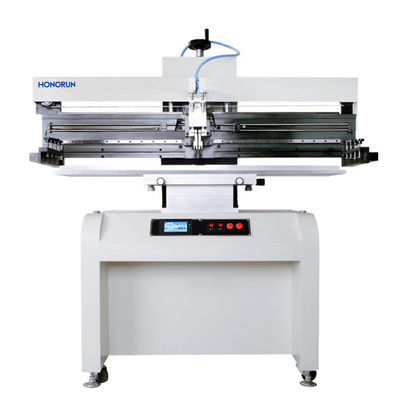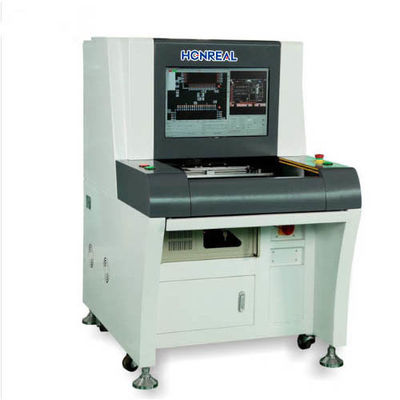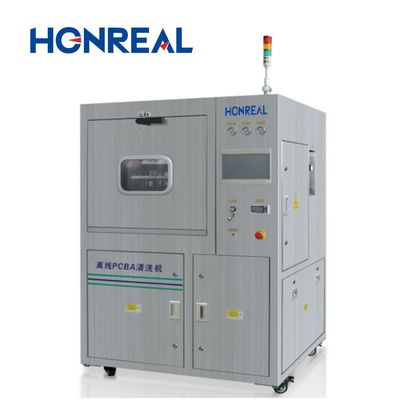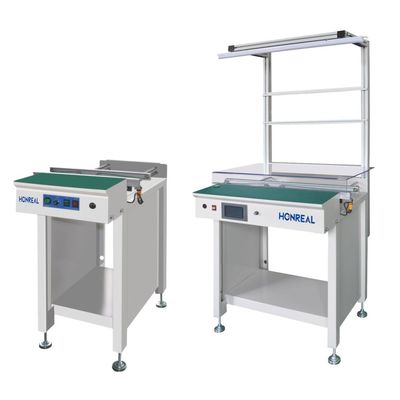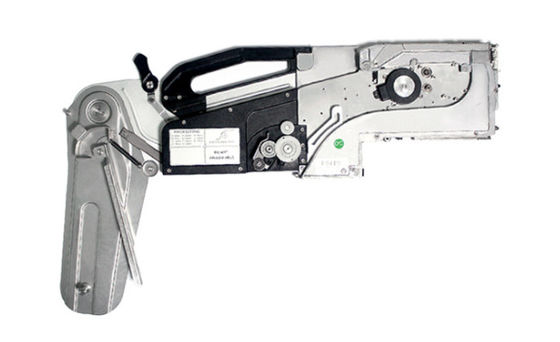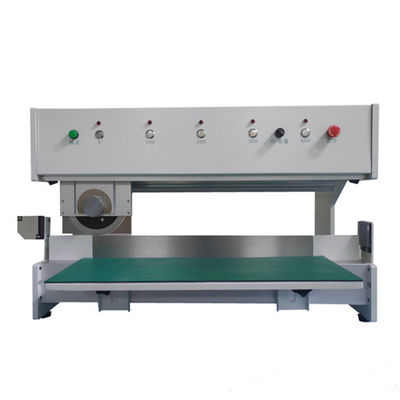The global automotive printed circuit board market size accounted for USD 10.38 billion in 2024 and is predicted to increase from USD 10.98 billion in 2025 to approximately USD 18.14 billion by 2034, expanding at a CAGR of 5.74% from 2025 to 2034. The increasing production of electric vehicles and the rising demand for automotive electronics contribute to market growth.

Automotive Printed Circuit Board Market Key Takeaways
- In terms of revenue, the automotive printed circuit board market is valued at $10.98 billion in 2025.
- It is projected to reach $18.14 billion by 2034.
- The market is expected to grow at a CAGR of 5.74% from 2025 to 2034.
- Asia Pacific dominated the automotive printed circuit board market in 2024.
- North America is expected to expand at the fastest CAGR in the upcoming period.
- By type, the double-sided PCBs segment held the largest market share in 2024.
- By type, the multi-layer PCBs segment is expected to grow at a significant CAGR between 2025 and 2034.
- By vehicle type, the passenger cars segment capture the biggest market share in 2024.
- By vehicle type, the commercial vehicles segment is expected to grow at the highest CAGR during the forecast period.
- By level of autonomy, the conventional vehicles segment contributed the highest market share in 2024.
- By level of autonomy, the autonomous vehicles segment is expected to grow at the fastest rate between 2025 and 2034.
- By application, the infotainment components segment led the market in 2024.
- By application, the ADAS and basic safety segment is expected to grow at a remarkable CAGR during the projection period.
How is AI Driving the Revolution in Automotive Components?
Artificial intelligence is dramatically enhancing design optimization, allowing engineers to create more efficient, compact, and higher-performance circuit layouts tailored to intelligent vehicle systems. With AI-assistance CAD, the development cycle becomes faster and more precise, reducing errors and enhancing thermal and power management. Moreover, AI is revolutionizing quality control and predictive maintenance during PCB manufacturing. Machine learning models can detect micro-defects in real-time, ensuring higher production yield and reducing costly recalls. In autonomous and electric vehicles, AI works in tandem with PCBs to manage real-time decision-making, adaptive control, and sensor fusion, making PCBs more functionally dense and mission-critical. By integrating AI deeper into automotive hardware design and testing cycle, the future of PCBs lies not just in conducting current but in empowering cognition, bringing the dream of truly smart mobility closer to reality.
Market Overview
The automotive printed circuit board market is witnessing rapid growth, driven by the global transition toward smarter, safer, and more sustainable vehicles. Printed circuit boards have evolved from their traditional roles to become the central nervous systems of modern cars, powering everything from navigation, entertainment, and connectivity to critical stability controls. As electric and hybrid car production continues to rise, the demand for high-voltage PCBs, lightweight materials, and heart-resistant multilayer designs is surging. These are crucial for managing battery power and motor control and integrating AI-based systems that require real-time data processing and low latency.
Furthermore, the industry is seeing a shift toward rigid-flex and HDI PCBs, which allow greater design flexibility and compromise durability, especially critical in high-vibration and thermal environments. OEMs and tier-1 suppliers are increasingly investing in in-house PCB integration to enhance customization and reduce dependency on third-party suppliers. Stringent safety regulations, high demand for smart mobility, and the ongoing digital transformation of automobiles are likely to boost the growth of the market.
Automotive Printed Circuit Board Market Growth Factors
- The rising demand for automotive electronics is expected to boost the growth of the market.
- The rapid shift toward electric vehicles further boosts the demand for automotive PCBs.
- Stringent safety and emission regulations are creating the need for reliable PCBs.
- The rising integration of infotainment systems and ADAS in vehicles leads to higher demand for PCBS.
Market Scope
| Report Coverage |
Details |
| Market Size by 2034 |
USD 18.14 Billion |
| Market Size in 2025 |
USD 10.98 Billion |
| Market Size in 2024 |
USD 10.38 Billion |
| Market Growth Rate from 2025 to 2034 |
CAGR of 5.74% |
| Dominating Region |
Asia Pacific |
| Fastest Growing Region |
North America |
| Base Year |
2024 |
| Forecast Period |
2025 to 2034 |
| Segments Covered |
Type Outlook, Vehicle Type Outlook, Level of Autonomy Outlook, Application Outlook, and Region |
| Regions Covered |
North America, Europe, Asia-Pacific, Latin America, and Middle East & Africa |
Market Dynamics
Drivers
Vehicle Electrification Ignites the PCB Revolution
The rising electrification of vehicles is a major factor driving the growth of the automotive printed circuit board market. As governments around the globe enforce stricter emissions regulations and promote EV adoption, automakers are under immense pressure to electrify their fleets. PCBs are the backbone of electric vehicles, powering components such as battery management systems (BMS), electric drive controls, regenerative braking systems, and power converters. The need for high-reliability PCBs that can withstand high voltage and temperature fluctuations is at an all-time high. Moreover, the push toward lightweighting in EVs also promotes the use of compact and efficient rigid-flex PCBs.
Restrain
High Production Costs and Supply Chain Disruptions
The automotive printed circuit board market faces several challenges that slow down its full potential. One of the most pressing challenges is the increasing complexity of automotive electronic systems, which demands highly precise, compact, and thermally stable PCBs. This complexity not only drives up production costs but also necessitates advanced design capabilities, rigorous testing procedures, and strict adherence to automotive safety standards, which create challenges for many small and medium-sized PCB manufacturers.
Moreover, the volatile cost of raw materials, especially copper and substrates, adds to pricing instability, making it difficult for manufacturers to scale cost-effectively. Another major restraint is the stringent regulatory landscape and lengthy qualification processes, especially in safety-critical applications like ADAS (Advanced Driver-Assistance Systems) and powertrain control. OEMs often require years of proven reliability before approving new PCB suppliers, limiting entry for newer or smaller players. Lastly, global supply chain disruptions, exacerbated by geopolitical tensions and ongoing semiconductor shortages, reduce the availability of PCB components and materials.
Opportunity
Shift Toward Smart Cars
With the global boom in connected and autonomous vehicles, there is a massive opportunity to innovate within the PCB space. As consumers shift toward smarter and safer mobility, the need for high-speed data transmission, wireless communication modules, and AI-based decision-making systems in vehicles becomes crucial. This encourages manufacturers to develop next-gen PCBs tailored to sensor fusion, LiDAR integration, and onboard diagnostics. Additionally, as the automotive industry pivots toward software-defined vehicles, there is a rising need for modular, scalable PCB solutions that can support frequent updates and software-driven functionality.
Type Insights
Why Did the Double-Sided PCBs Segment Dominate the Market?
The double-sided PCBs segment dominated the automotive printed circuit board market with the largest share in 2024. This is mainly due to their perfect balance between cost-efficiency and functionality. These boards feature circuitry on both sides, connected through vias (holes) that allow signals to pass between layers. This design enables denser circuit placement, which is especially beneficial in space-constrained automotive environments.
Most traditional automotive systems, such as LED headlamps, dashboard clusters, rear-view mirror controls, and power windows, rely on double-sided PCBs for their moderate complexity and stable electrical performance. Furthermore, their manufacturing costs are significantly lower than multi-layered alternatives, making them attractive to Original Equipment Manufacturers (OEMs) that seek scalable solutions without compromising performance. Additionally, the growing demand for cost-effective electronic modules in emerging markets, where price sensitivity is high, has solidified the position of double-sided PCBs. These boards are also mechanically robust, making them ideal for vibration-prone environments, a common scenario in road vehicles.
On the other hand, the multi-layer PCBs segment is expected to grow at a significant CAGR in the coming years owing to the exponential rise in vehicle electronics and smart mobility integration. These PCBs are essential for complex circuitry, including ADAS, battery management systems (BMS), infotainment units, and autonomous driving modules. Their multi-tiered architecture allows for signal integrity, noise reduction, and miniaturization, which are critical in processing-heavy applications. As vehicles transition into software-defined machines, the need for high-speed data transmission and power management drives demand for multi-layer PCBs.
Moreover, EVs and hybrid vehicles require intricate circuitry to support high-voltage power management, regenerative braking, and torque vectoring systems, all of which depend on multi-layer boards. This segment is also benefiting from technological breakthroughs in PCB materials, such as ceramic substrates and polyimide layers, which allow higher temperature tolerance and improved flexibility for automotive applications.
Vehicle Type Insights
How Does the Passenger Cars Segment Dominate the market?
The passenger cars segment dominated the automotive printed circuit board market with the largest revenue share in 2024 primarily due to their sheer production volume, creating the need for automotive electronics. There is high demand for vehicles with a range of features, including navigation systems, ambient lighting, automated HVAC controls, driver assistance systems, parking sensors, and more, all of which require multiple PCBs. Additionally, with the massive surge in connected car ecosystems, even mid-segment and economy cars now feature internet of things IoT-enabled dashboards, smart keys, and touchscreen infotainment, further driving the need for reliable and compact circuit boards.
Automakers are increasingly turning toward electronics-based differentiation to stay competitive, leveraging design upgrades that rely heavily on PCBs. Rising electrification of aging passenger vehicles boosts the demand for printed circuit boards for thermal control, voltage regulation, and battery monitoring, thereby making them the largest and most sustained consumer of automotive PCBs.
On the other hand, the commercial vehicles segment is expected to grow at the highest CAGR during the forecast period. The push for clean logistics, combined with government-backed electrification programs, is boosting the demand for PCBs used in inverter control, motor drive units, GPS modules, safety mechanisms, and vehicle-to-everything (V2X) communication. Fleet operators are embracing smart vehicle management systems with real-time diagnostics, predictive maintenance, and cloud-based tracking, each of which adds layers of PCB-driven technology. Furthermore, commercial EVs require high-reliability boards with thermal stability and vibration resistance, which is pushing demand for thick copper PCBs and high-Tg laminates.
Level of Autonomy Insights
What Made Conventional Vehicles the Dominant Segment in the Market?
The conventional vehicles segment dominated the automotive printed circuit board market in 2024. This is because the global fleet remains largely composed of non-autonomous vehicles, many of which are now being retrofitted with smart modules for better safety and entertainment. These vehicles use PCBs in engine control units (ECUs), anti-lock braking systems (ABS), powertrain management, lighting, and HVAC control features that have become standardized across regions.
Additionally, manufacturers of conventional vehicles have increased their focus on semi-autonomous features like adaptive cruise control and blind-spot monitoring even in conventional vehicle platforms, thereby enhancing PCB usage. Cost-efficiency and easier certification requirements for conventional vehicles ensure that their electronics footprint continues to grow, cementing their dominance in the near term.
Meanwhile, the autonomous vehicles segment is expected to grow at the fastest rate during the projection period. The rising production of autonomous vehicles is creating the demand for multi-dimensional PCBs due to their reliance on advanced perception systems, real-time computing, redundancy, and fault-tolerant design. These vehicles depend on sensor-rich environments involving LiDAR, radar, ultrasonic arrays, GPS, and camera modules, all of which require multi-layer and high-frequency PCBs. The need for zero-latency data transmission, power control, and signal processing lead to a surge in demand for RF PCBs and rigid-flex configurations for space optimization.
Application Insights
Why did the Infotainment Components Segment Dominate the Market in 2024?
The infotainment components segment dominated the automotive printed circuit board market with a major revenue share in 2024. This is mainly due to the increased integration of infotainment systems in vehicles. Infotainment systems have evolved from being optional add-ons to becoming core differentiators in automotive design. Whether it is an entry-level sedan or a luxury SUV, modern vehicles feature touchscreen interfaces, Bluetooth audio, navigation systems, voice assistants, and rear-seat entertainment units.
These systems require high-speed, multi-layer PCBs that can manage data from multiple sources while maintaining signal clarity and temperature resilience. Infotainment modules also serve as integration hubs for other systems such as climate control, smartphone mirroring, and voice-activated services, demanding real-time responsiveness from the circuit boards. With the rise of cloud-based infotainment and 5G connectivity, PCBs are increasingly becoming miniature data centers inside vehicles, processing enormous amounts of user and system data for seamless experiences.
On the other hand, the ADAS and basic safety segment is expected to grow at a remarkable CAGR during the projection period. The ADAS has become the most crucial safety and innovation frontiers in the automotive world. Features like lane-keeping assist, adaptive cruise control, emergency braking, and cross-traffic alerts rely on sophisticated PCBs that process information from diverse sensors. This segment is growing rapidly due to regulatory mandates, consumer demand for safer driving, and the proliferation of electronic control units (ECUs) dedicated to these functionalities.
ADAS-specific PCBs must be fail-safe, EMI-shielded, and resistant to temperature fluctuations, making their design and material selection highly critical. In parallel, basic safety systems like airbags, tire pressure monitors, and rear-view cameras are now standardized across even lower-end vehicle segments, further contributing to the rise of PCB consumption in this application segment.
Honreal Plc Control System Turn Over PCB Conveyor 180 - 360 Degrees Automatic Smt Pcb Inverter, Meet your double-sided board production process requirements,


 Your message must be between 20-3,000 characters!
Your message must be between 20-3,000 characters! Please check your E-mail!
Please check your E-mail!  Your message must be between 20-3,000 characters!
Your message must be between 20-3,000 characters! Please check your E-mail!
Please check your E-mail! 
